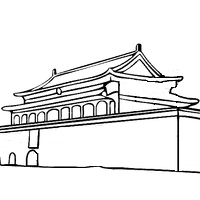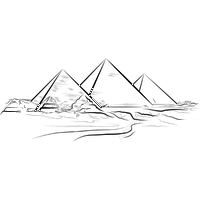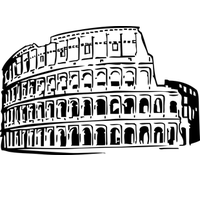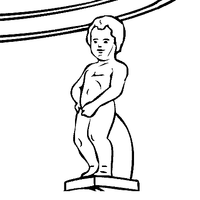Gustave Eiffel is not only known for his turn, he is also known for the large amount of art work he has installed throughout France, and even abroad. Specializing in metal work and more particularly iron, he made many contributions to the French genius, who thanked him by the attribution of a large amount of professional distinction.
This document lists some improvements that Gustave Eiffel has implemented for the construction of bridges, viaducts, bridges and the contributions that have been released for the civil engineering.
Metallic batteries
One of the first projects on which the young engineer worked was in 1868, at the request of Mr. Nordling, engineer of the Orleans Railway Company. It was to propose projects for the construction of viaducts on metallic piles of the line of Commentry in Gannat, and he was in charge of the construction of two of these viaducts, one of the Sioule, the other of Neuvial.
The most important of these works, that of Sioule, is based on two metal piles, the highest of which is 51 meters high. These piles consist of cast iron columns joined by iron spacers. On this occasion he imagined, for the connection of the cast iron and the iron gussets on which the spacings were fixed, a mode of insertion during the casting, which succeeds in making the first blow. He had windows fitted in the gussets, through which the cast iron, during casting, would engage in the gusset and assemble with him by a series of tenons. He suppressed, by this method, that the engineers considered a serious progress of construction, the difficulties of adjustment presented by the usual mode of connection.
The study of these piles led Gustave Eiffel to attach himself to the construction of similar batteries, but substituting iron for melting to increase the solidity. The type of batteries he imagined consists of forming them by four large quadrangular boxes open on the inside of the pile and in which are inserted long square bracing bars, likely to work as well. well in extension than in compression, under the efforts of the wind. In this way, all parts of the batteries are accessible for maintenance and visit, and their overall stability is greatly increased. It is this type that became common later, especially on the future constructions of Eiffel, for example the side viaducts of the Douro bridge, the large viaducts of the Douro line, and those of the Beira line. -AIta, in Portugal. The definitive type of these piles which has been the subject of a special patent is located at the Garabit viaduct with a height of 61 meters which was the highest height reached during the construction of the Eiffel Tower.
The rigidity of these piles is very large, their maintenance very easy, and all together has a real character of strength and elegance according to the criteria of the time. The system he put in place for these constructions was really reliable and the piles of the Garabit viaduct, in particular, can be considered as a model for these heights. For even greater heights, 100 meters and above, Eiffel patented a new battery system with no strings and curved edges, which for the first time provided the complete solution for piles of any height.
Improvements to the launching of straight bridges
The construction of the viaducts built on these metal piles led Eiffel to study and perfect the jetting methods used until then. Jetting is the operation of pushing into the void, until the meeting of the successive piles, an apron which was previously mounted on the embankment of the surroundings.
He adopted the process of operating directly by large levers the rollers on which the bridge, which eliminates any tendency to overturn the batteries and he imagined the rocking chassis to carry these pebbles, and whose type has since come into common practice. These devices, by their mobility around horizontal axes, allow the pressures of the deck to be distributed uniformly on each of the rollers, so that none of the points of the beam, even with rolling surfaces located in different planes, do not carries reactions superior to those we have imposed. The first use of these frames was made at the viaduct of Sioule in 1869. Two chassis sheet metal bearing each two rollers rested by a joint on the ends of a large frame - articulated itself at its center, so that the reaction of the beam on the support was finally concentrated in the middle of it and shared between the four support rollers in a rigorously equal way.
Their use allowed launching which without it would have been absolutely impracticable. In the practice of Eiffel, it is necessary to mention the bridge of the Tardes (line of Montluçon with Eygurande). This viaduct crosses a very deep valley and the rail is 80 meters above the bottom of the river: it is formed by a straight deck of 250 meters, of length in three bays, whose central span has 104 meters of opening. The reaction on the pile at the time of the great cantilever amounted to 700 tons and the number of pebbles balanced in pairs on each support was up to 24; it was thus possible not to exceed for each of the reactions on the beam an effort of 29 tons. The rollers were arranged in rows of six with a triple joint. The deck launched from the right bank could not be assembled in its entirety because of the neighborhood of a trench curve. When the central part was brought to rest on the intermediate piles in a somewhat singular position, the complement of the assembly was carried out in overhang of the piers with the abutments, according to a process explained later.
Let's also mention as examples of large launchings:
- The bridge over the Tagus, on the line of Caceres. The length of the moving deck was 367 meters and was based on seven compressed air-powered stacks.
- The Viamta Bridge in Portugal, for road and railroad. This work, built according to Mr. Eiffel's project following an international competition, is 736 meters long, including 563 meters for the main bridge which was launched in one piece. The mass thus set in motion was 1,600 tons, and exceeded the weight of the largest aprons set up by this process until that time. The batteries, nine in number, are built with compressed air, at a depth of 25 meters below the floor
- The road bridge of Cubiac, on the Dordogne, built in 1882 on the site of the old suspension bridge. The total length of this bridge is 555 meters divided into eight bays, whose intermediates have an opening of 72.80 m, its weight is 3 000 tons. This firing presented the greatest difficulties because the cast iron stacks on which the deck rested provided very little stability under the efforts of the overturning during the launch, because of the shape that had been given to them by engineers to recall those from the old bridge. The difficulty was further increased by the need to launch the ramp bridge of 0.01 m per meter. This launching was carried out from each of the two banks for the three bays which were continuous there. For the two central spans, the ramp was different and another process was needed; this is one of the most striking examples of a new editing method that Gustave Eiffel was the first to apply in France, door assembly-to-false
Cantilever mounting
On a part of the beam of the bridge already built in its final position one hangs in cantilever, by a buttoning, the pieces of iron which follow there and, once they are riveted, one s 'serves as new points of support for bolting the following parts. By walking thus, step by step, we arrive at completely emptying the successive parts of the span, until we reach the adjacent support where with the help of cylinders the bridge is raised. the amount he had lowered by flexing.
For the Cubzac bridge, a length of 72.80 m was approached as far as the axis of the central pile where the beams of the two bays mounted cantilevered were met.
Another cantilevered launching method was successfully applied to the Tan-An Bridge in Cochin China to cross an 80-meter span, forming the central opening of a 221-meter-long bridge. . The assembly of this span was carried out on both sides cantilevered and the meeting was made in the vacuum, towards the middle of the opening and without any intermediate support. This arrangement differed from that of Cubzac where the junction was made on one of the piles. The central keying was done by operating proper rotations around the supports.
This elegant solution of the assembly problem was particularly interesting in this case because of the depth of the river and the high speed of the current, which made the construction of any scaffolding almost impossible. On the other hand, the piles consisted of a number of iron screw piles of about 30 meters in height, and on the top of which it would have been very imprudent to try to install them by jetting, even with the most advanced aircraft. The length of this book is 250 meters and its weight, including batteries, is 1400 tons.
The cantilevering process was also used at the Ben-Luc Bridge, adjacent to the Tan-An Bridge and located, like him, on the Saigon Railway line at Mytho. Its length is 516 meters and it rests on ten piles in screw piles, and four in masonry. The weight of this work, including batteries, is 2,100 tons.
Among the considerable number of straight bridges built by M. Eiffel, there is the Cobas bridge (Asturian line) which is interesting because of its 100.80 m span in a single bay. He crosses the Sil obliquely, by a beam of 13 meters high, in the middle of which is placed the way. Lastly, the viaduct of the Oise (line of Mantes at Argenteuil, Compagnie de l'Ouest), whose bearing axis in axis of the supports is of 96,50 m. The beams are parabolic, their maximum height is 12 meters: they are 10 meters above the river.
Arch bridges
The role and influence of Gustave Eiffel in the construction of arch bridges has been even greater than in the case of straight decks and metal piles. First we have to talk about the Slegedin high road bridge (Hungary).
It was after a competition opened at the end of the year 1880, between the main builders of France and abroad, that this work, including foundations with compressed air, masonry and superstructure metallic, was entrusted to Eiffel. Its total length is 606.30 m, the navigation span is formed by a parabolic arc of 110.30 m of rope with an arrow of 8.60 m only, giving the quite unusual lowering of 1/13. Toll pavilions, masonry abutments and piles were treated in a very decorative and tasteful style according to the notions of architectural beauties of the time. The roadway is 11 meters wide and is supported by pillar studs, which rest on the upper surface of the arches. These arches are rigid by themselves, which made it possible to remove all braces in the eardrums, and to give the whole work a very light appearance.
The assembly of the large span has provided Eiffel with a new opportunity to apply its cantilever mounting processes, removing the scaffolding to the right of the pass reserved for navigation. The total price of this work was 3,250,000 francs. If these general dispositions were not very different from the known types, it was not the same for the famous bridge over the Douro, in Porto.
It was also after an international competition in 1875 that the project of the Eiffel House was adopted; Here are the characteristic features:
The railway route from Lisbon to Porto had to cross the Douro River at a height of 61 meters above the river level, the very deep depth of which made it impossible to build any intermediate support. The width of the river (160 meters) had to be crossed by a single span. He proposed, therefore, a project with an arch of 43.50 m. of medium arrow and 160 meters of rope, intended to support the right apron, which, outside the arc, was supported by ordinary metallic piles. This bow was of a very special shape, it was supported on a simple patella at birth and its height was gradually increasing to the top, so as to affect the shape of a crescent. This form is particularly favorable for resistance to asymmetrical forces, because it allows to give great heights in the most tired parts of the arc.
A new and no less important provision consisted in placing the two arcs constituting the span in oblique planes, so as to give the base a gap of 15 meters necessary for the stability under the forces of the wind, while the part superior kept a spacing of 4 meters, sufficient to carry the beams of the upper viaduct.
Finally, a third innovation was realized in the assembly, which was done entirely cantilevered and without intermediate scaffolding. For this purpose, the arches were built from each of the births, and supported, as and when they were built, by steel cables that were attached to the upper deck. Each of the built parts served as a fulcrum for restoring the following parts. The two parts of the arc by these successive paths advanced towards each other and came to meet in the space, where the installation of the key which was to bring them together took place.
This editing operation, as difficult as it was new, was successful. It was this success that enabled Eiffel to obtain the project for the Garabit viaduct which was to cross, at a height of 122 meters, the Truyère valley, on the Marvéjols line in Neussargues.
See also:




















